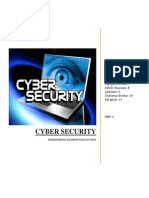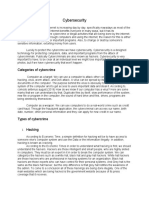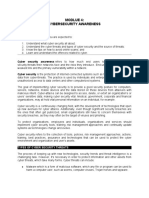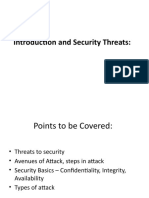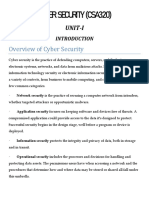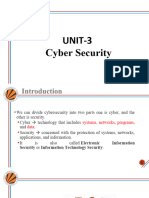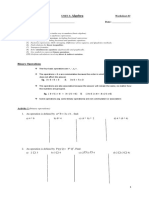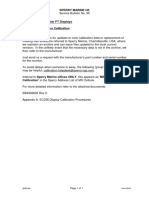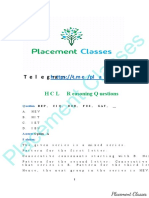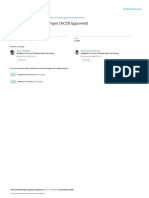0% found this document useful (0 votes)
10 views6 pagesCS Security2
The document defines threats as incidents that can harm assets, categorizing them into intentional and accidental types, with various motivations for attackers including political, economic, and socio-cultural. It outlines different types of cyber-attacks, such as active and passive attacks, and describes various malicious software like viruses, worms, and Trojan horses. Additionally, it emphasizes the importance of security policies in managing network security and provides recommendations for effective policies to protect against cyber threats.
Uploaded by
dinesh.guptaCopyright
© © All Rights Reserved
We take content rights seriously. If you suspect this is your content, claim it here.
Available Formats
Download as PDF, TXT or read online on Scribd
0% found this document useful (0 votes)
10 views6 pagesCS Security2
The document defines threats as incidents that can harm assets, categorizing them into intentional and accidental types, with various motivations for attackers including political, economic, and socio-cultural. It outlines different types of cyber-attacks, such as active and passive attacks, and describes various malicious software like viruses, worms, and Trojan horses. Additionally, it emphasizes the importance of security policies in managing network security and provides recommendations for effective policies to protect against cyber threats.
Uploaded by
dinesh.guptaCopyright
© © All Rights Reserved
We take content rights seriously. If you suspect this is your content, claim it here.
Available Formats
Download as PDF, TXT or read online on Scribd
/ 6






























